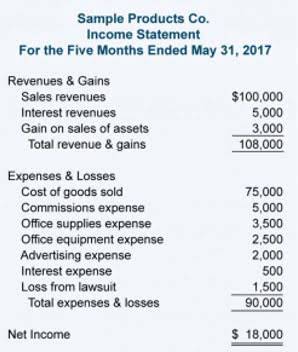
Although this may not appear to be a particularly efficient use of resources, the first year’s trading may not be representative. Once Topple Co becomes more established it should benchmark adjusting entries its sales to working capital ratio against sector data if available. The sales to working capital ratio indicates how efficiently working capital is being used to generate sales. It might be moving inventory quicker (a lower DIO), collecting what it is owed faster (a lower DSO), or keeping its money longer (a higher DPO). However, remember that CCC should not be the only metric used to evaluate the company or the management; return on equity and return on assets are also valuable tools for determining management’s effectiveness.
Applications of the Operating Cycle Formula
- On the contrary, a long operating cycle creates a negative impact on the cash flow of a business.
- The cash operating cycle concept of working capital suggests that the reason for longer cash operating cycles of a business can be either due to high inventory days, high receivable days or high payable days.
- One of the main reasons that net income falls short in capturing the actual liquidity of the company is due to working capital – most notably inventory, accounts receivable (A/R) and accounts payable (A/P).
- For instance, a company will get payments at a consistent pace if its operational cycle is shorter.
- It’s also critical to distinguish between an operating cycle and a cash cycle.
While it is a good for the company’s shareholders that the company is keeping its working capital low, they need to make sure that the very long days payable outstanding is not due to any liquidity problem. Efficient management of the operating cycle is crucial for businesses to improve cash flow, optimize resources, and enhance overall productivity. By understanding the components of the operating cycle and how to calculate it, companies can make informed decisions that positively impact their financial health.

Cash Cycle Vs. Operating Cycle

Once inventory is sold, it typically converts into accounts receivable, especially in businesses that offer credit terms to their customers. At this point, the company has generated revenue, but the cash has not yet been collected. This transition signifies that the company has delivered goods or services and now awaits payment from its customers. The duration of this period depends on the credit policies extended to clients. The result shows that the company has a working capital of $2,500,000, which means that it has enough current assets to cover its current liabilities and fund its operations. The working capital cycle is 73 days, which means that it takes 73 days for the company to convert its inventory into cash, and then use that cash to pay off its current liabilities.

Example 1: Retail Industry

Outstanding inventory is inventory that has not been sold, accounts receivable are the accounts that the company needs to collect on, and accounts payable are accounts the company needs to make payments to. The operating cycle is the number of https://northamericansecurity.ca/registered-student/what-is-an-expense-account-definition-purpose/ days it takes for your business to receive inventory, sell the inventory, and collect the cash from the sale of the inventory. Therefore, it’s the time it takes for your company to turn inventory into cash. Your company’s operating cycle, together with efficient purchasing software, holds significant importance in projecting the necessary working capital to sustain or expand your business.

- Seasonal businesses, like holiday decor shops, may see cycles spike in Q4 and plummet in Q1, requiring adjusted analysis.
- HighRadius seamlessly integrates with leading ERPs like SAP and Oracle, ensuring a smooth and comprehensive O2C process.
- Calculating this cycle plays a significant role in assessing the efficiency of a business.
- A company can also sell products on credit, which results in accounts receivable (AR).
- The main areas of improvement for XYZ Co. are lower inventory days and lower receivables days.
- A low DSI suggests that your company is efficiently managing inventory and selling products quickly.
Understanding how to calculate your operating cycle is essential for monitoring and improving your financial performance. The operating how to find operating cycle cycle formula provides you with valuable insights into the efficiency of your cash conversion process. We’ll explore the formula and its basic concepts, as well as provide practical examples to help you grasp this critical aspect of your business. Accounts receivable management is a critical aspect of your operating cycle, focusing on ensuring that your customers pay you promptly for the goods or services you’ve provided.
- Remember, the goal is not just to collect money but to do so efficiently and sustainably.
- For instance, software companies that offer computer programs through licensing can realize sales without the need to manage stock.
- Managers use this information to make better decisions about buying inventory, pricing products, and extending credit to customers.
- For instance, if a company has a COGS of $1,500,000 and an Average Inventory of $200,000, its Inventory Turnover would be 7.5 times ($1,500,000 / $200,000).
- The formula for calculating the cash conversion cycle sums up the days inventory outstanding and days sales outstanding, and then subtracts the days payable outstanding.
- This is because company A has a shorter operating cycle and lower net working capital than company B, which reduces the cash outflows and increases the cash inflows.
A lower DSO indicates that you are collecting payments promptly, which positively impacts cash flow and liquidity. Have you ever wondered how businesses seamlessly convert investments into cash, ensuring smooth financial operations? In this guide, we’ll unravel the intricacies of the operating cycle, shedding light on its crucial role in financial management.


أحدث التعليقات